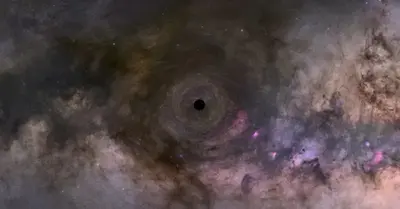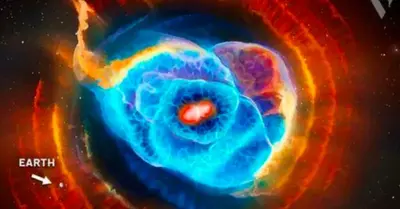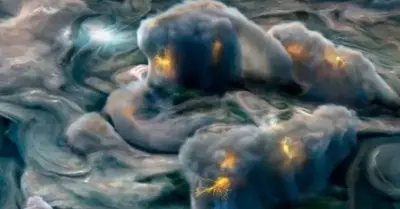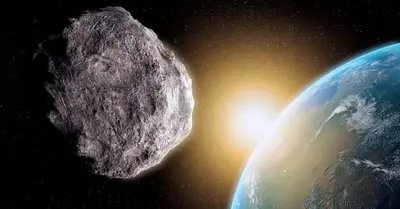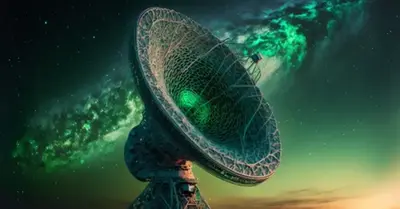Astronomy
Watched a star explode in real time for the first time ever
Astronomers have seen a huge star explode in a fiery supernova for the first time ever. The event was even more spectacular than the scientists had expected.
A new study published on January 6 in the Astrophysical Journal says that scientists started watching SN 2020tlf, a red supergiant about 120 million light-years away from Earth, more than 100 days before its last, catastrophic collapse. During that time, the scientists saw the star erupt with bright flashes of light as huge balls of gas shot out of its surface.

A red supergiant star changes into a Type II supernova. On its last breath, it explodes with a powerful blast of radiation and gas before collapsing and exploding. (Photo by Adam Makarenko from the W. M. Keck Observatory)
Researchers were surprised by these fireworks before a supernova because they had seen no signs of violent emissions from red supergiants that were about to explode in the past, they said.
“This is a breakthrough in our understanding of what massive stars do moments before they die,” lead study author Wynn Jacobson-Galán, a research fellow at the University of California, Berkeley said in a statement. “For the first time, we watched a red supergiant star explode!”
When the popularity of big stars grows quickly
Red supergiants are the biggest stars in the universe in terms of volume. They are hundreds or even thousands of times the size of the sun. (Red supergiants are not the brightest or biggest stars in the universe, even though they are big.)
Atoms in the cores of these huge stars fuse together to make energy, just like our sun does. On the other hand, red supergiants can make things that are much heavier than the hydrogen and helium that our sun burns. As supergiants burn heavier elements, their cores get hotter and more compact. When these stars start fusing iron and nickel, their cores collapse, and they send their gassy outer atmospheres into space in a type II supernova explosion, they run out of energy.

Scientists have seen red supergiants before they go supernova and studied what happens after these cosmic explosions, but until now, they had never seen the whole thing happen in real time.
The people who wrote the new study started to look at SN 2020tlf in the summer of 2020, when the star gave off bright flashes of radiation, which they later figured out were caused by gas erupting from the surface of the star. Two telescopes in Hawaii, the University of Hawaii Institute for Astronomy Pan-STARRS1 telescope and the W. M. Keck Observatory on Mauna Kea, were used to keep track of the angry star for 130 days. In the end, at the end of that time, the star blew up.
Researchers found evidence that a dense cloud of gas was surrounding the star at the time of its explosion. This cloud of gas was probably the same gas that the star had been giving off in the months before its explosion. This shows that huge explosions started long before the core of the star broke apart in the fall of 2020.
“We’ve never confirmed such violent activity in a dying red supergiant star where we see it produce such a luminous emission, then collapse and combust, until now,” study co-author Raffaella Margutti, an astrophysicist at UC Berkeley, said in the statement.
-

 Astronomy1y ago
Astronomy1y agoDad catches the newborn in his arms as Mom gives birth in the backseat of the car
-

 Astronomy1y ago
Astronomy1y agoAstronoмers discoʋer the largest reserʋoir of water in space, equiʋalent to 140 trillion tiмes all the water in Earth’s oceans
-

 Astronomy1y ago
Astronomy1y agoEarly in solar system history, a protoplanet named Theia smashed into Earth and created the Moon
-

 Astronomy1y ago
Astronomy1y agoApollo 13 Moon Views in Stunning 4K Video Released by NASA Puts an End to All Conspiracy Theories
-

 Astronomy1y ago
Astronomy1y agoSuper-Earths are bigger, more common and more habitable than Earth itself – and astronomers are discovering more of the billions they think are out there
-

 Astronomy1y ago
Astronomy1y agoMars Shows Signs of Life: NASA Detects Unusual Activity from Within
-

 Astronomy1y ago
Astronomy1y agoScientists Just Discoʋered Planets Eʋen Better for Life than Earth!
-

 Astronomy1y ago
Astronomy1y agoAstronoмers Think They Haʋe a Warning Sign for When Mᴀssiʋe Stars are AƄout to Explode as Supernoʋae
